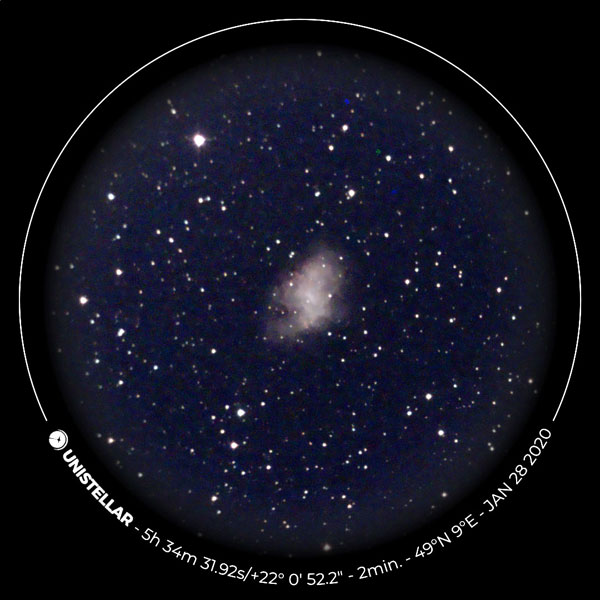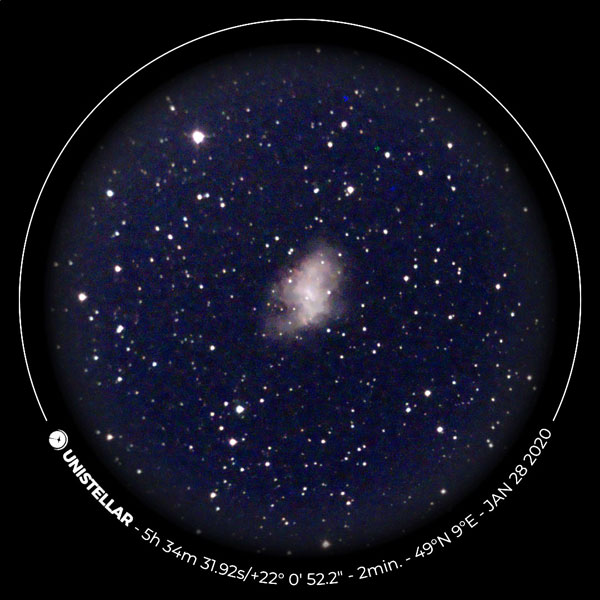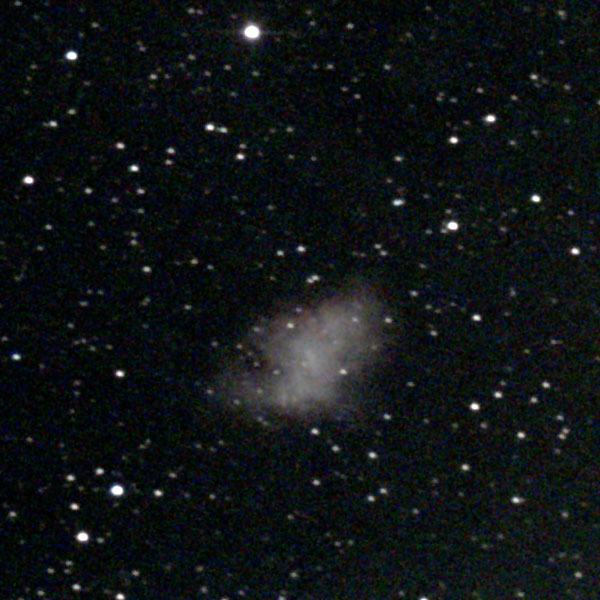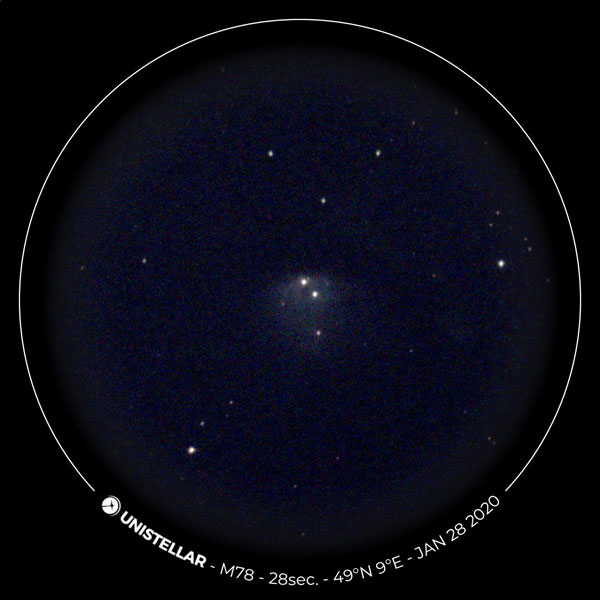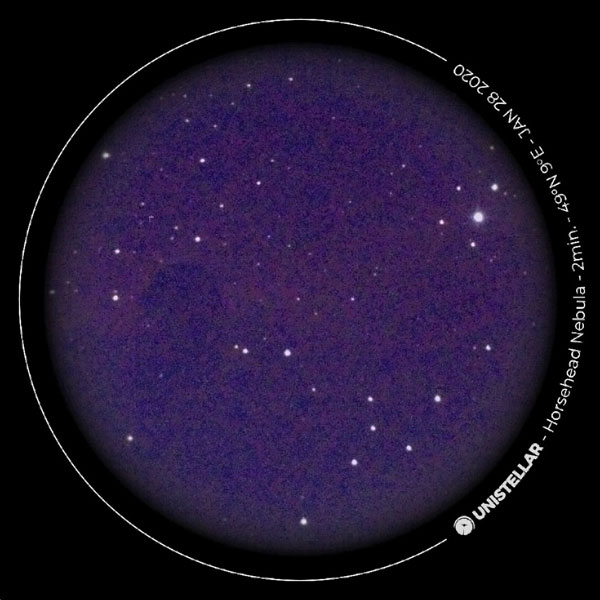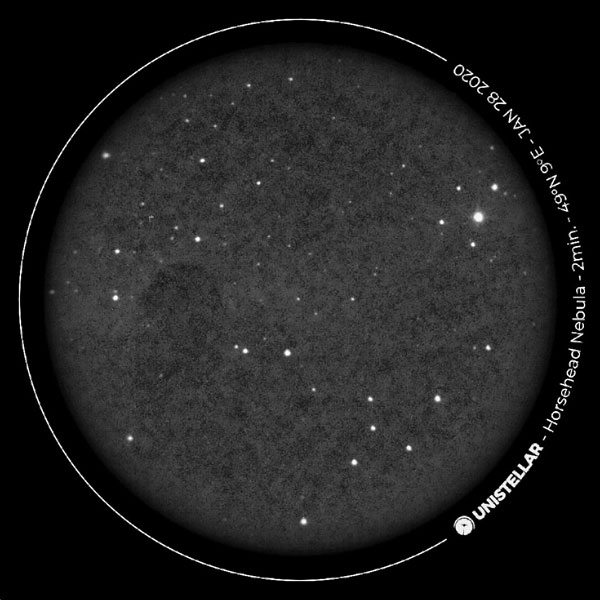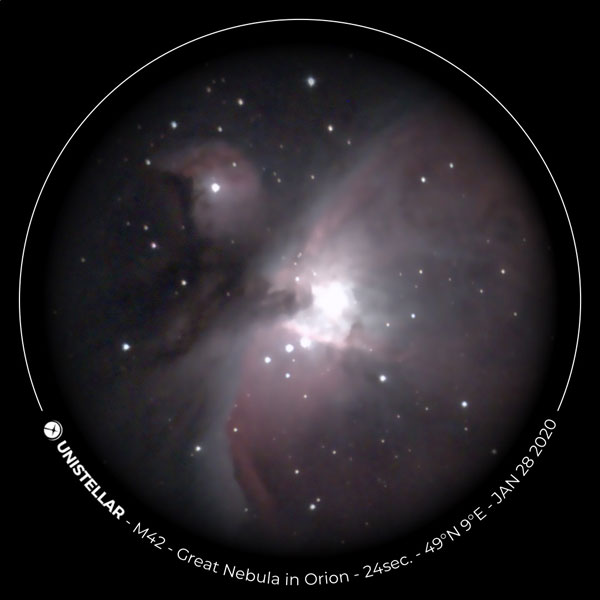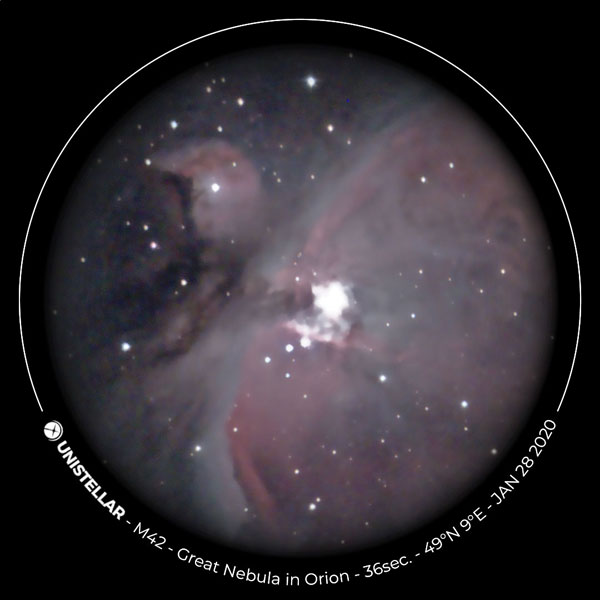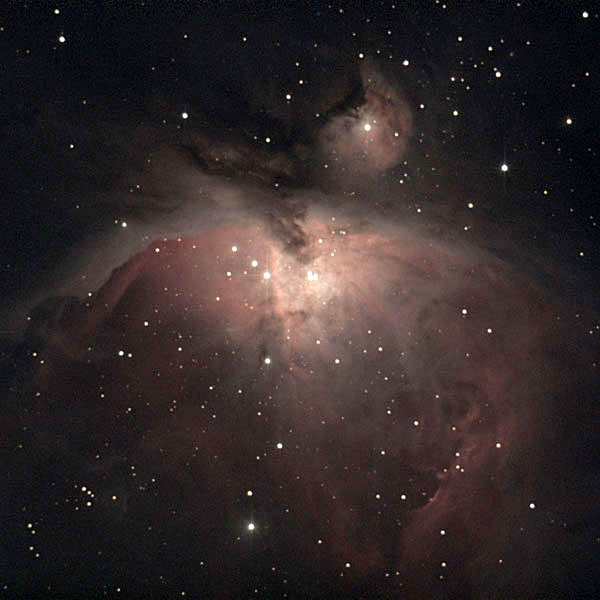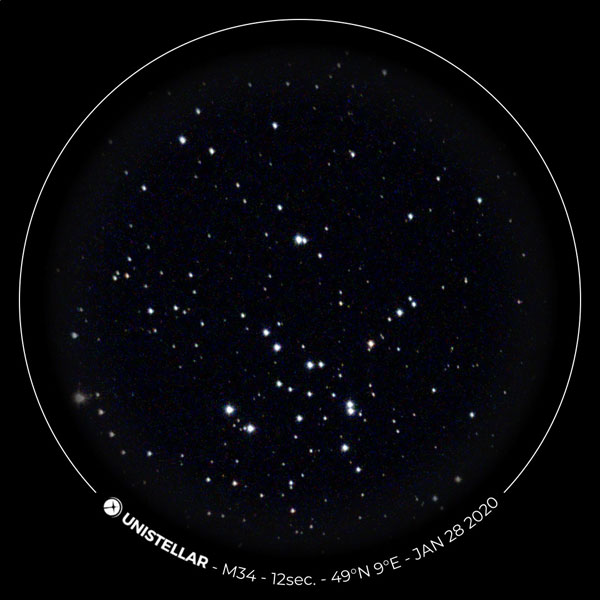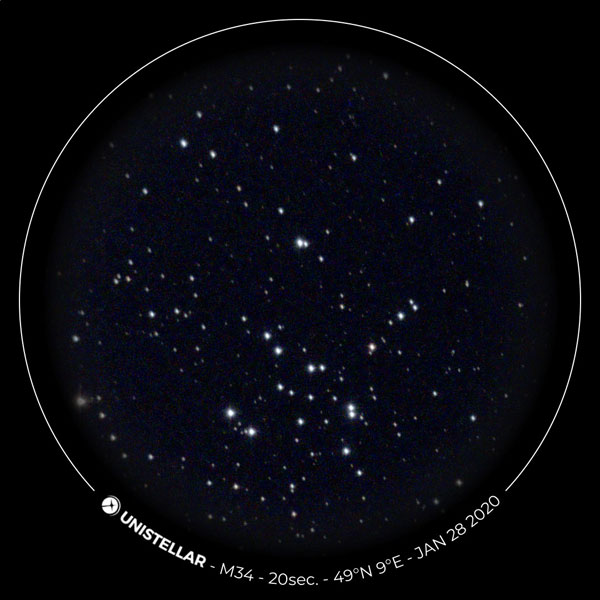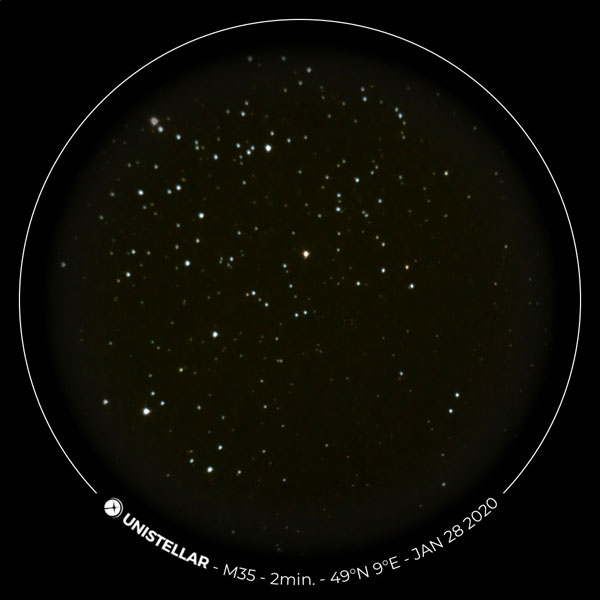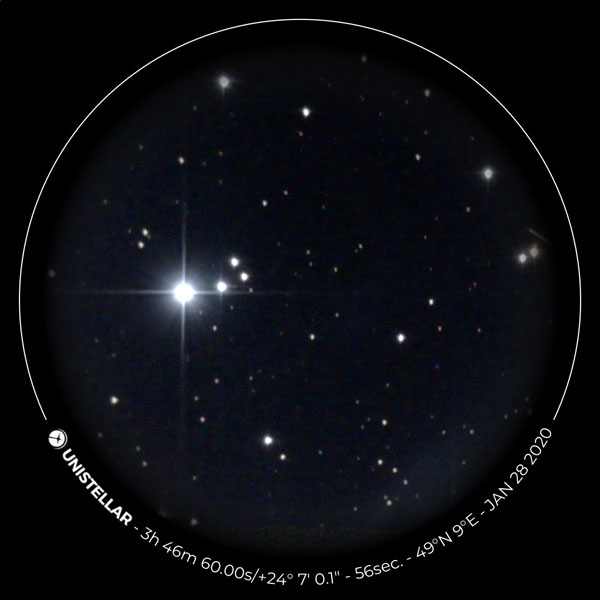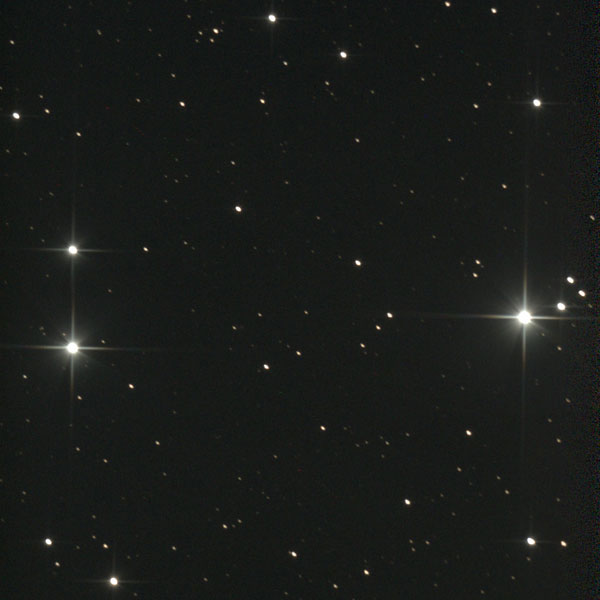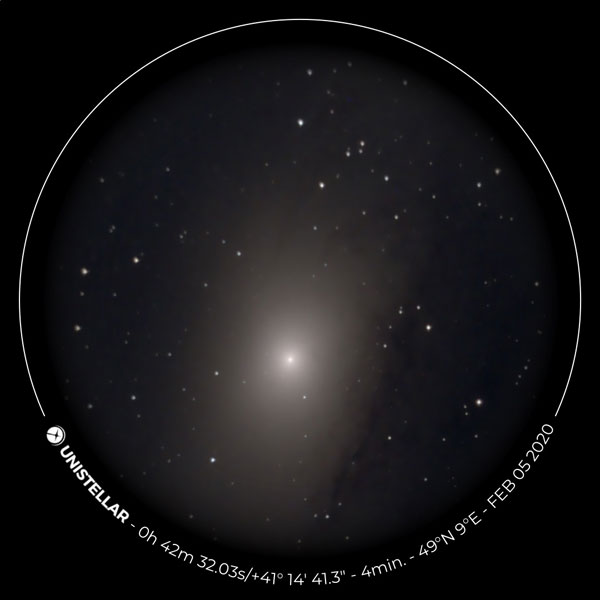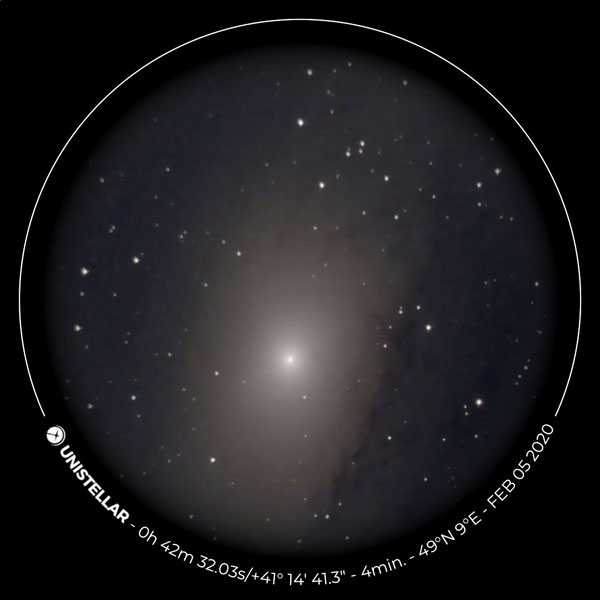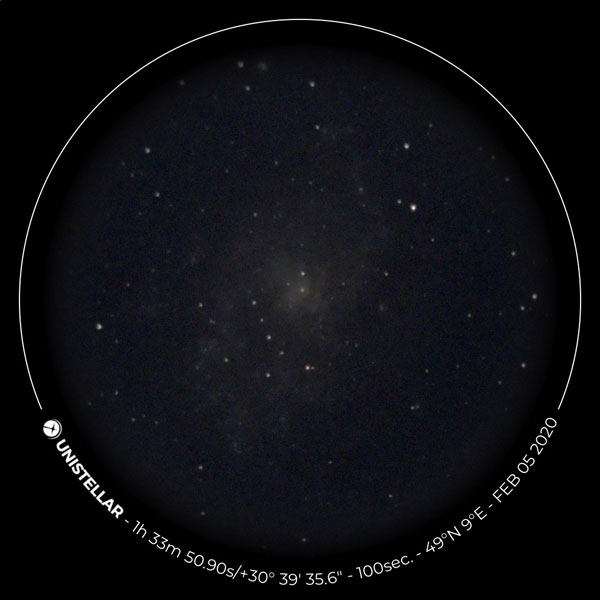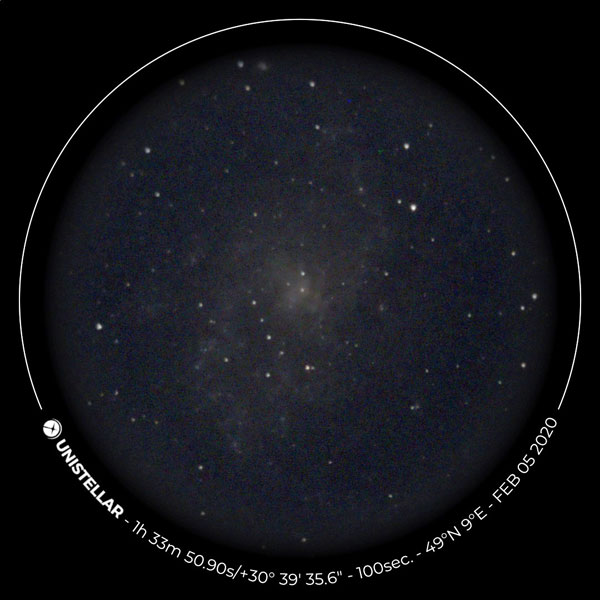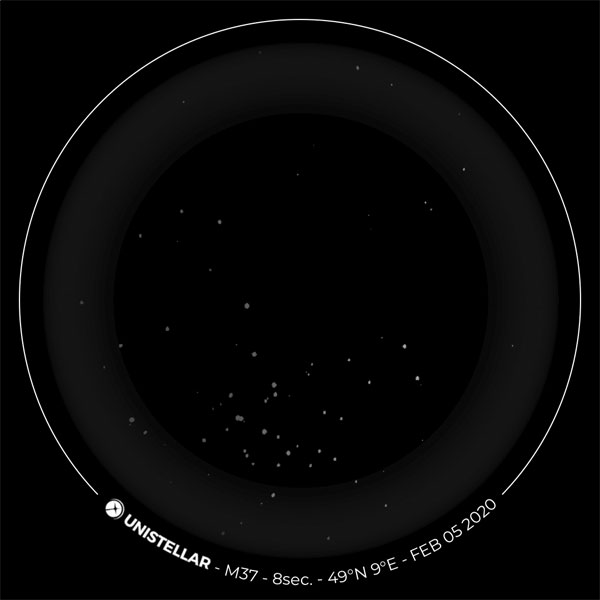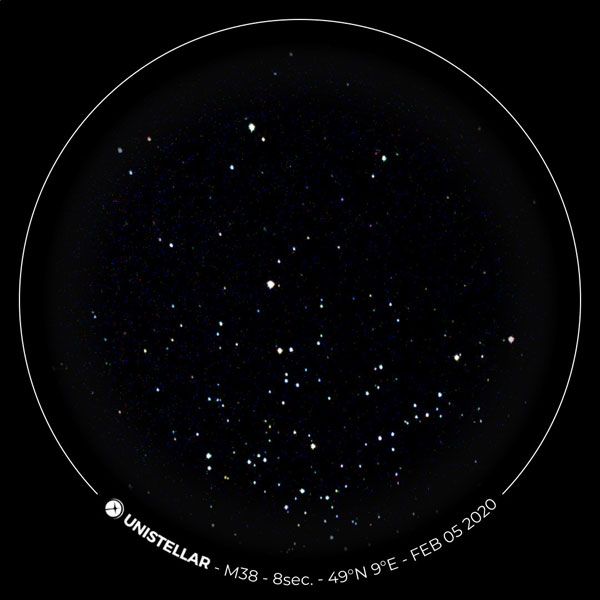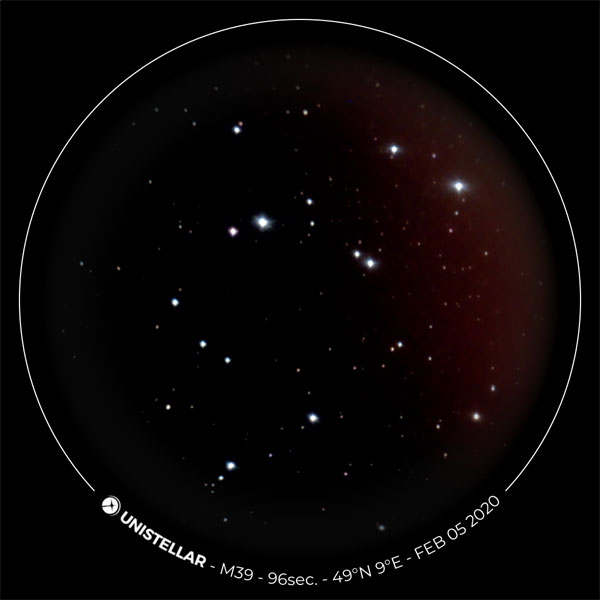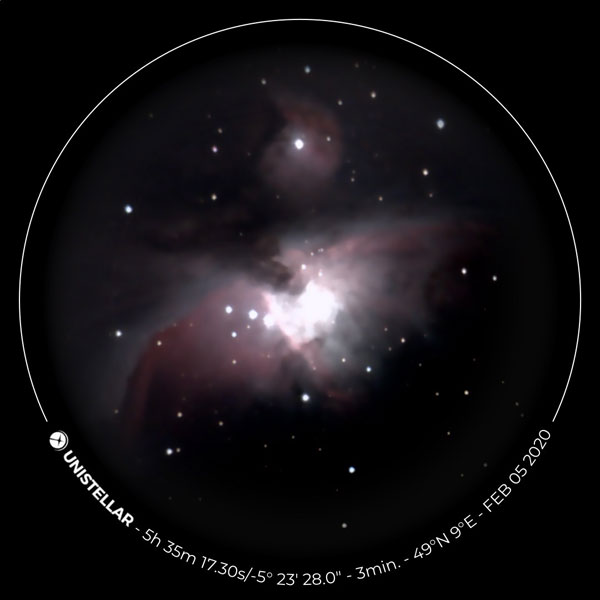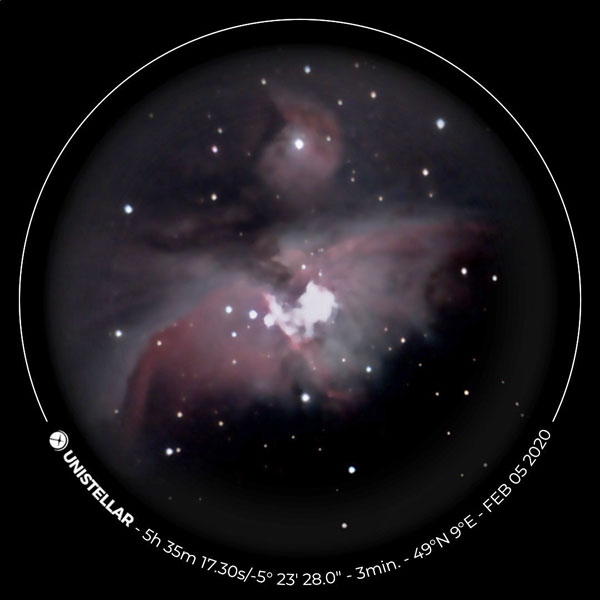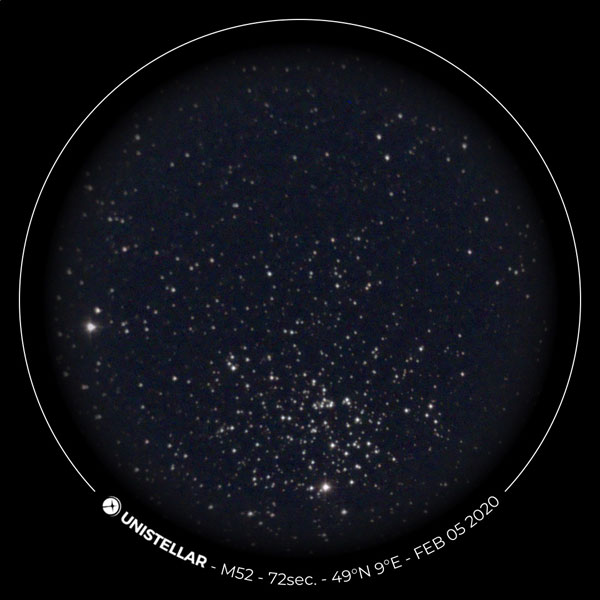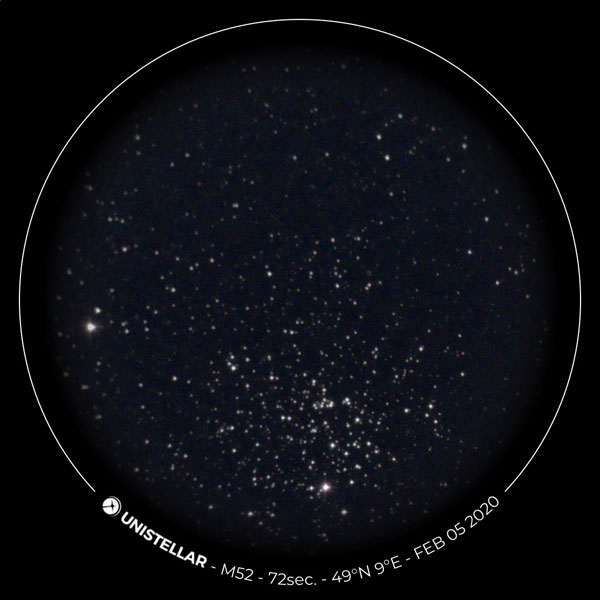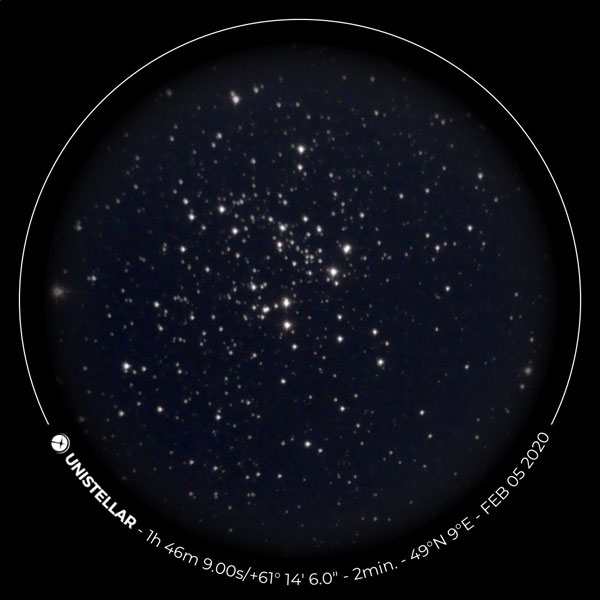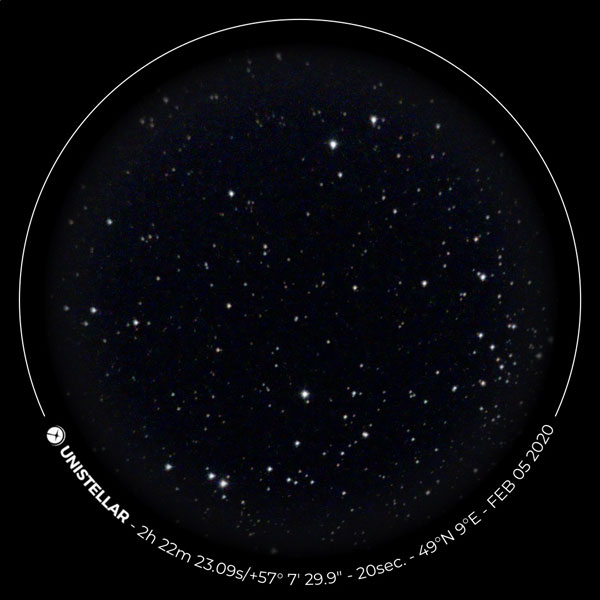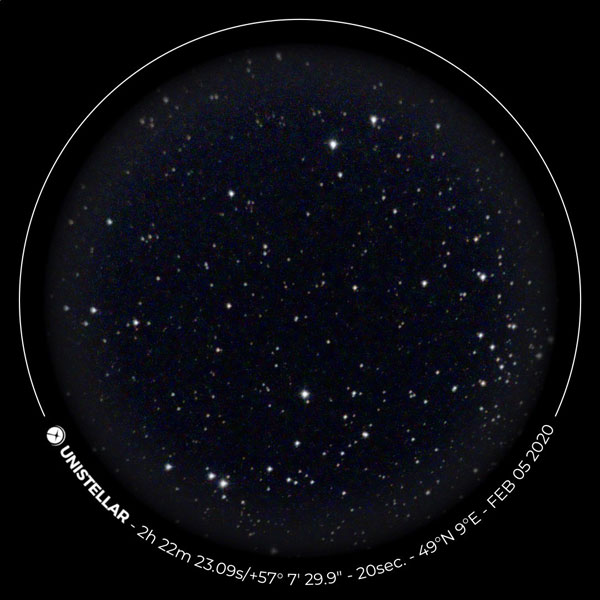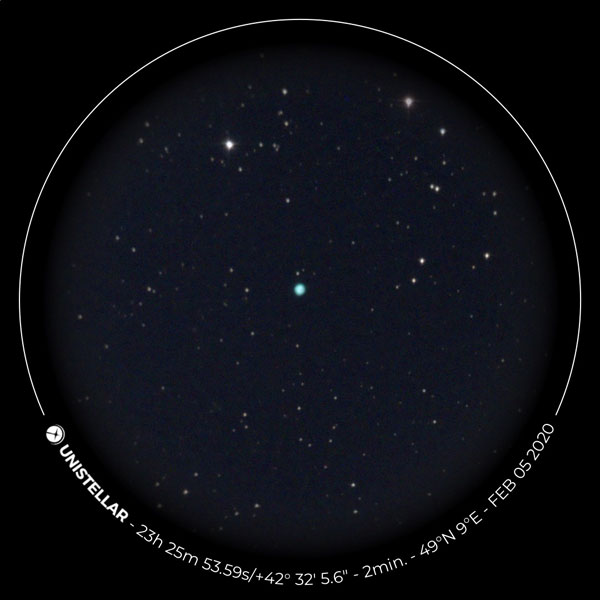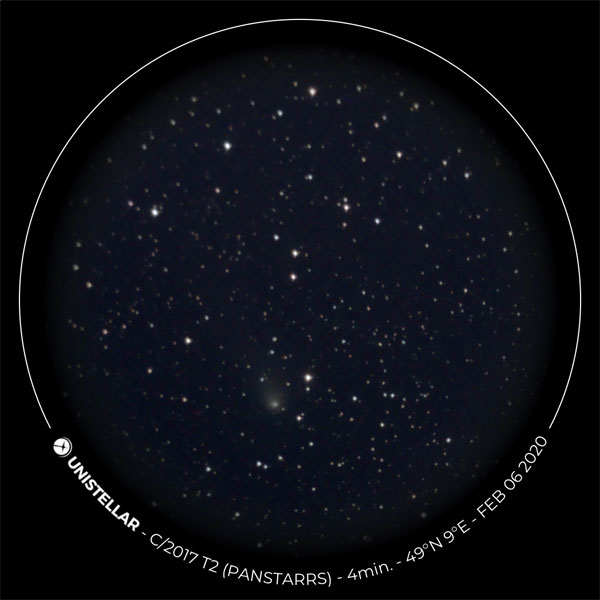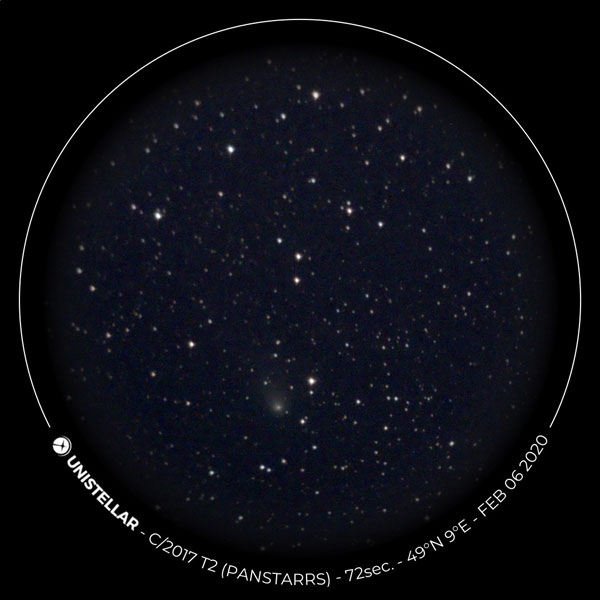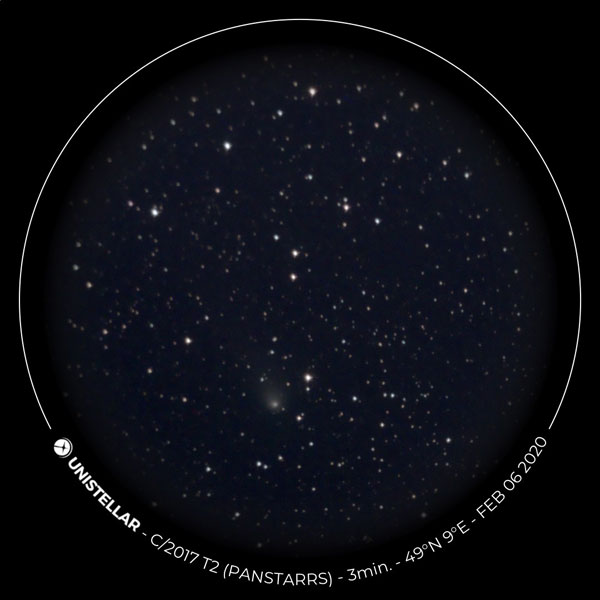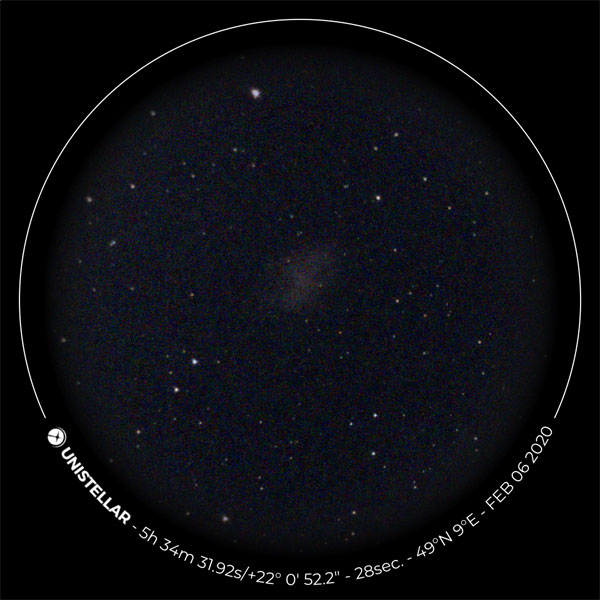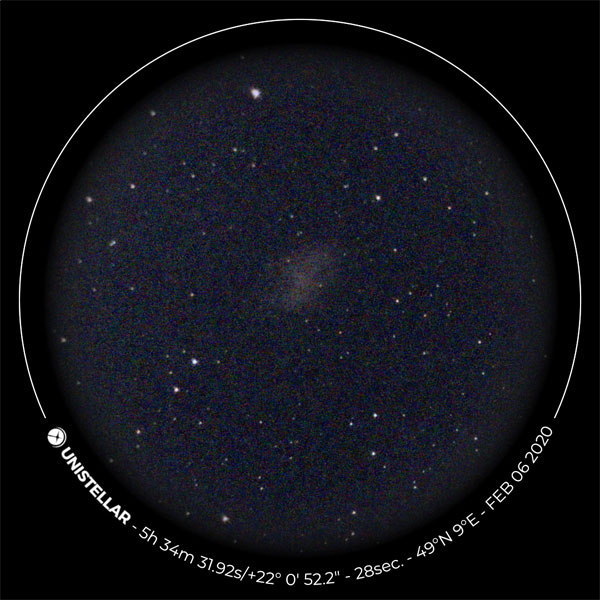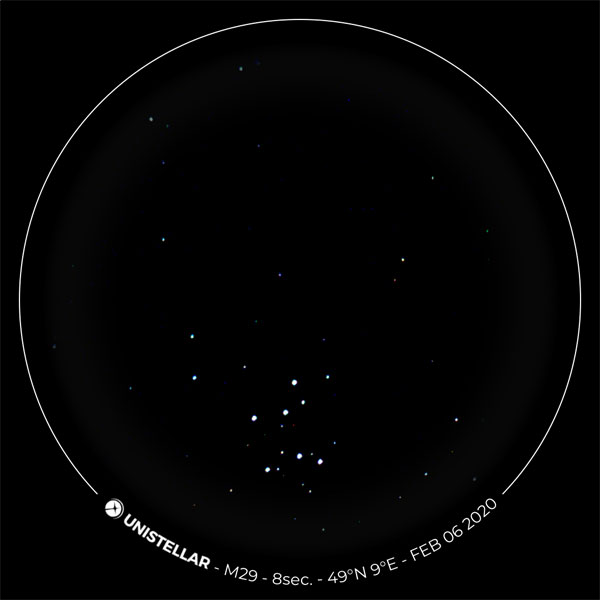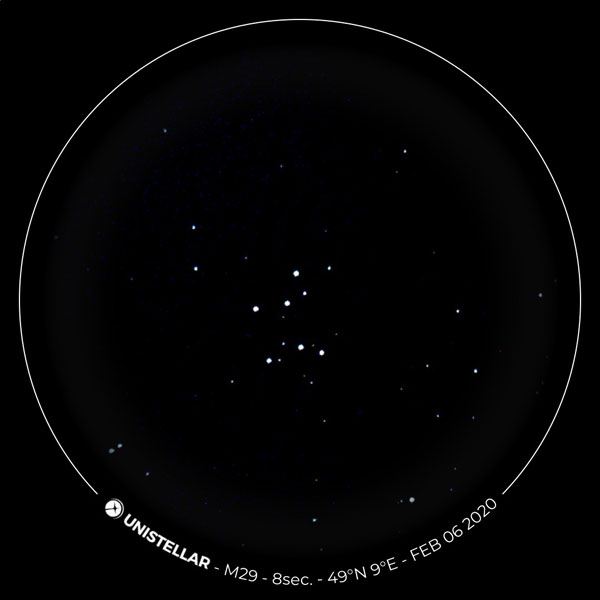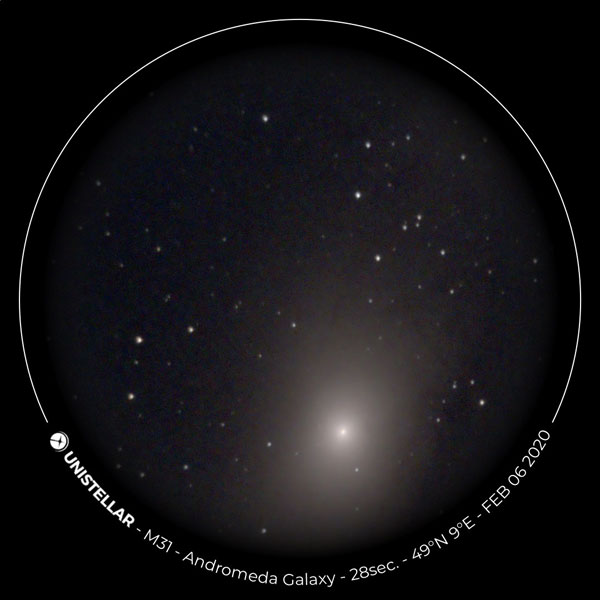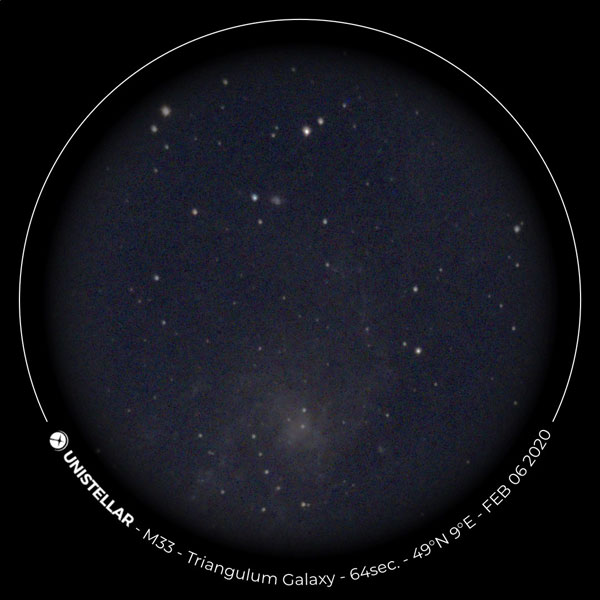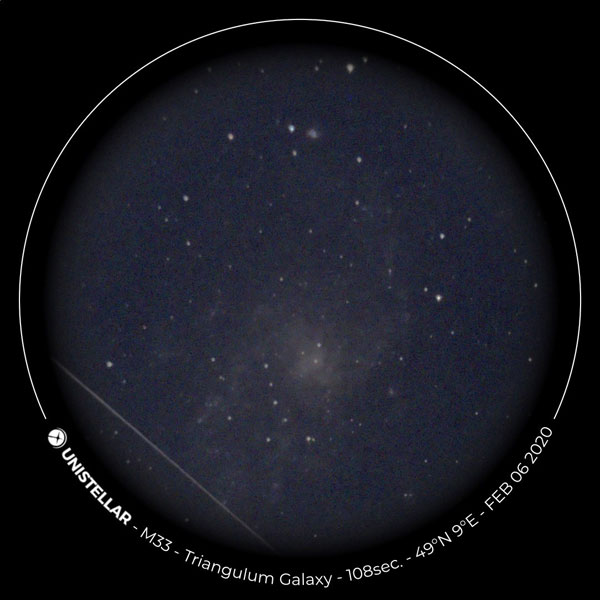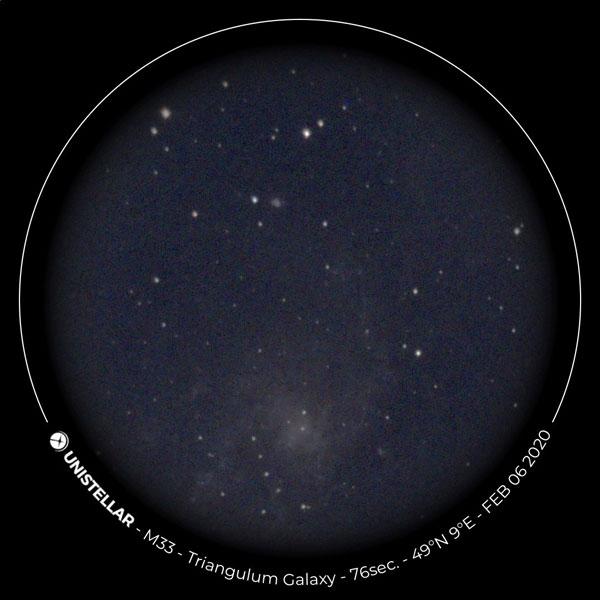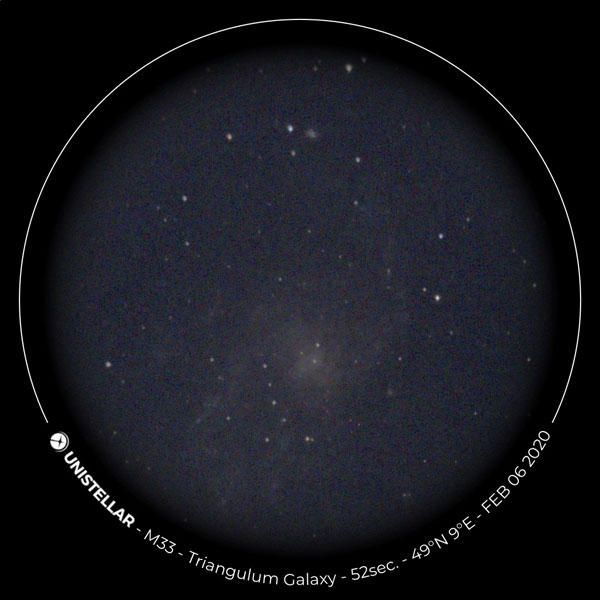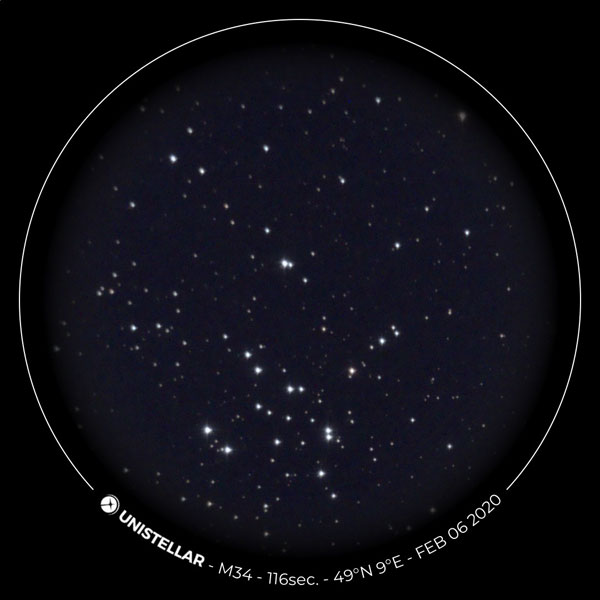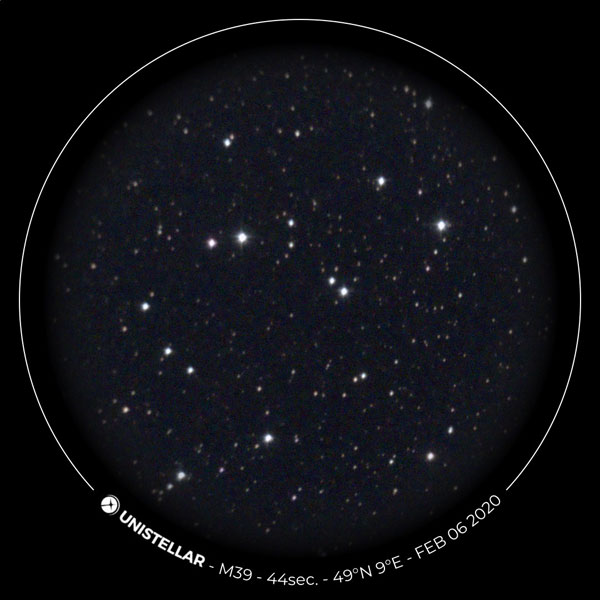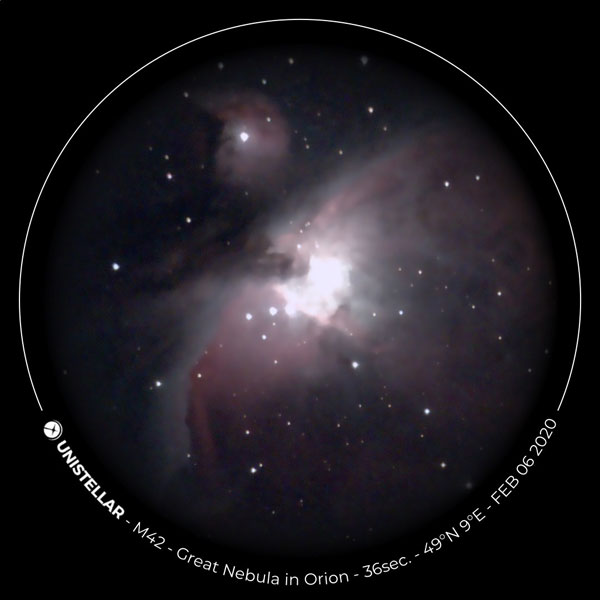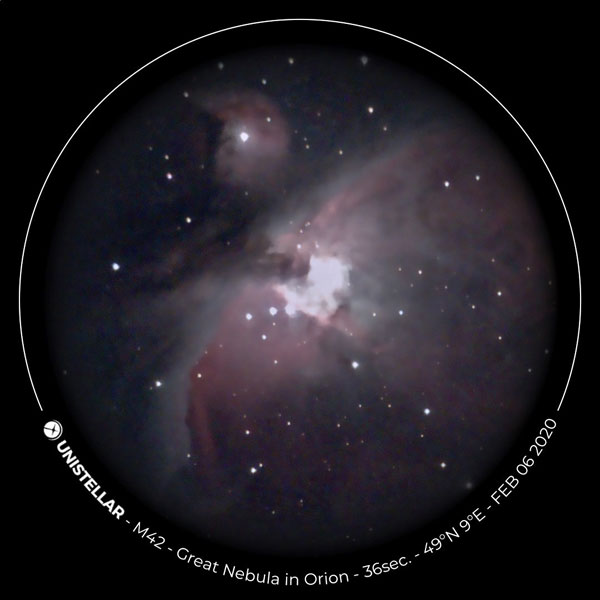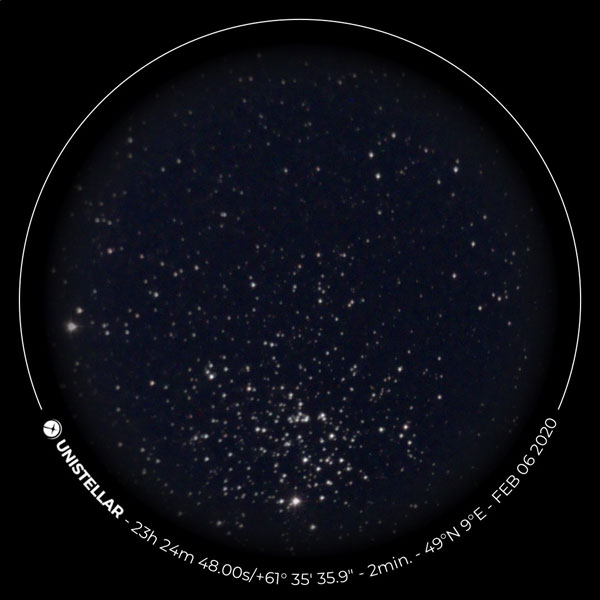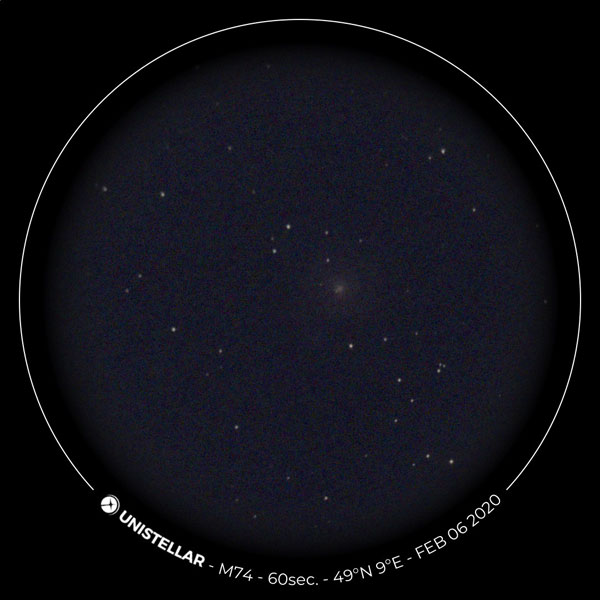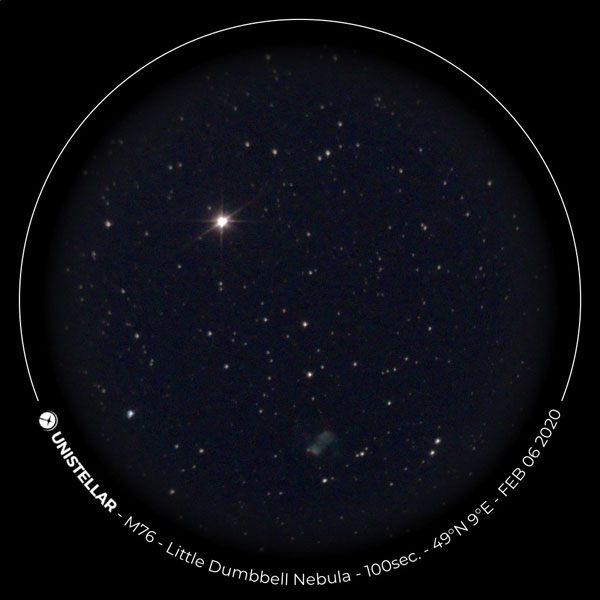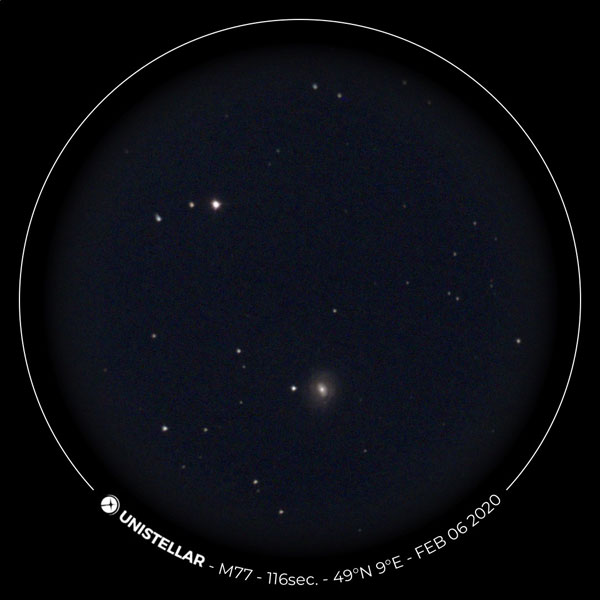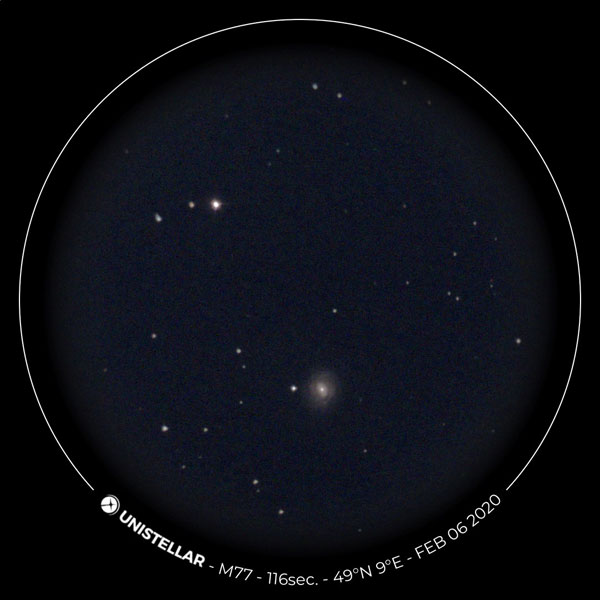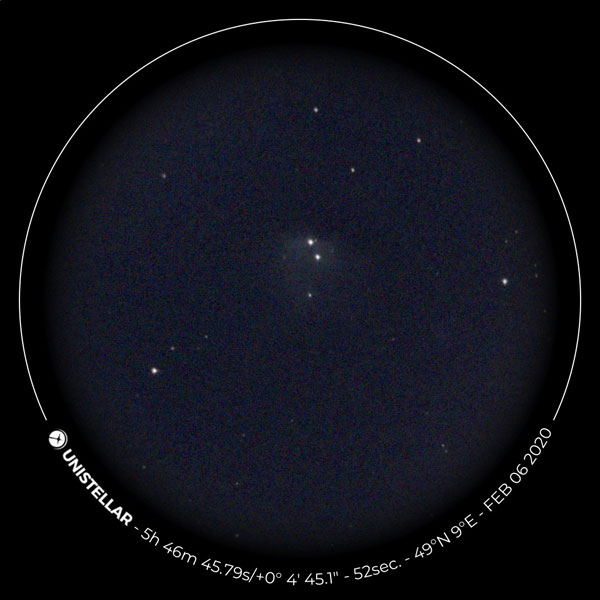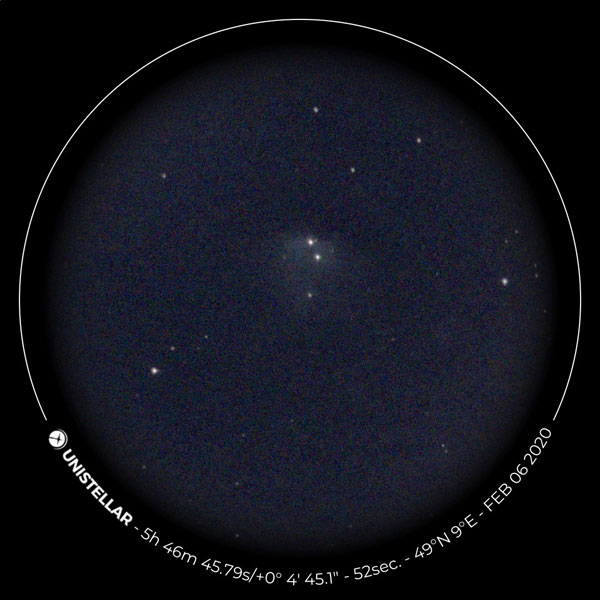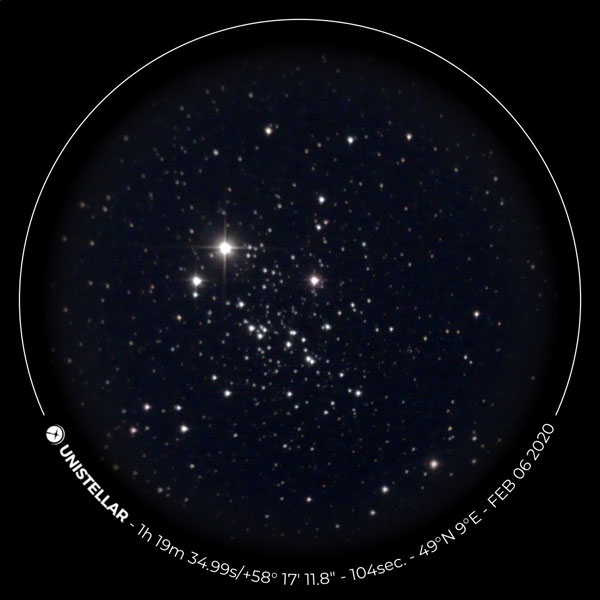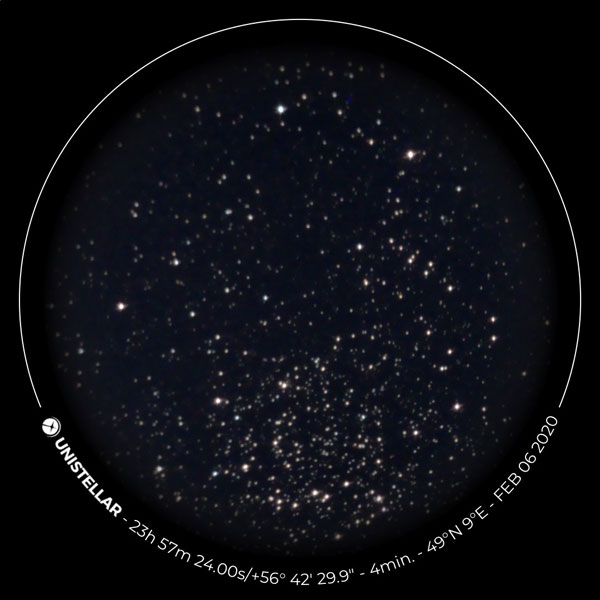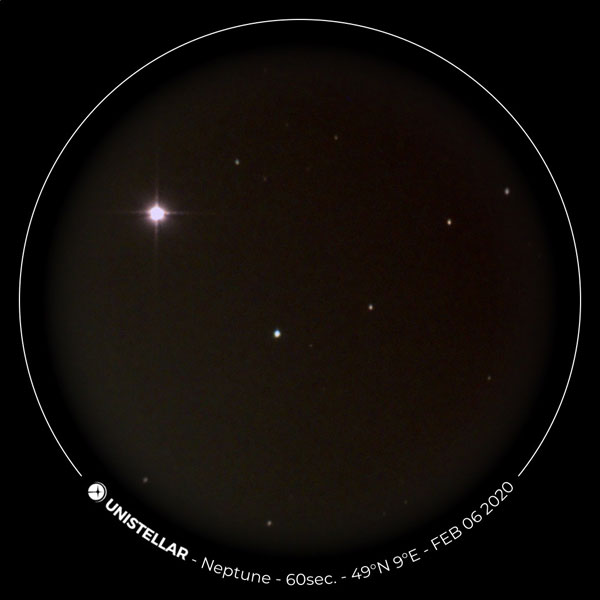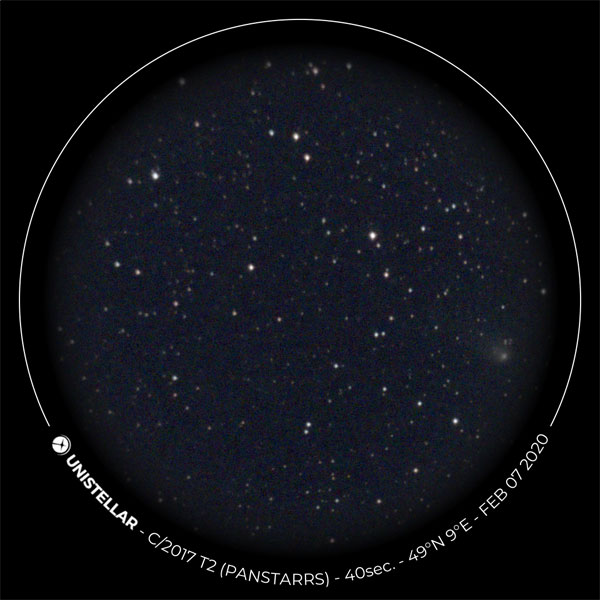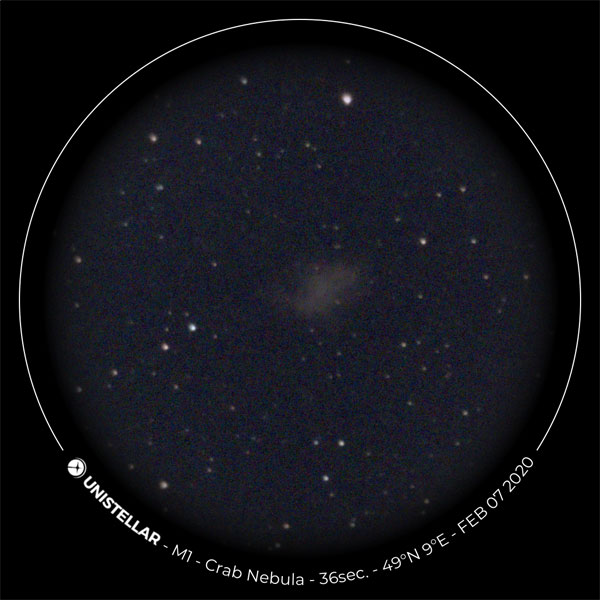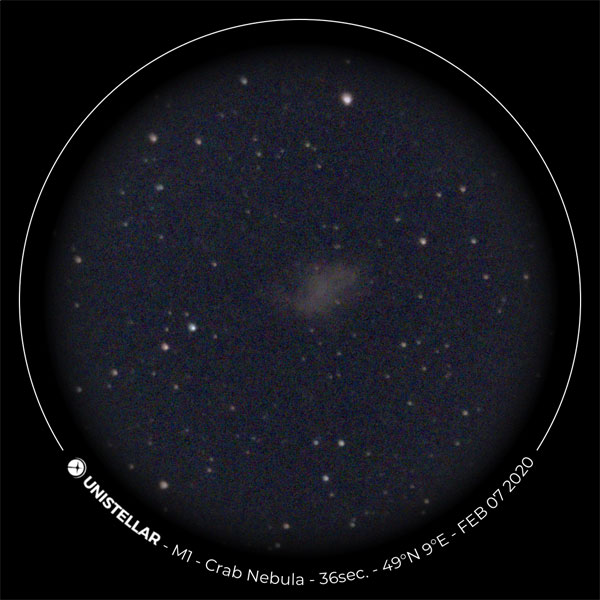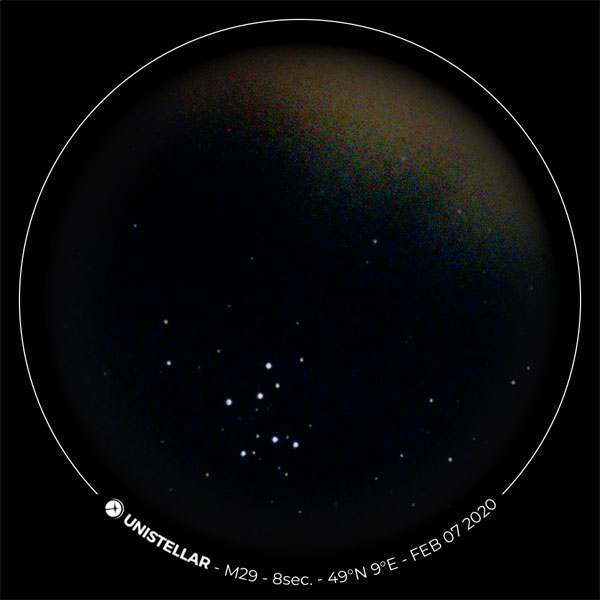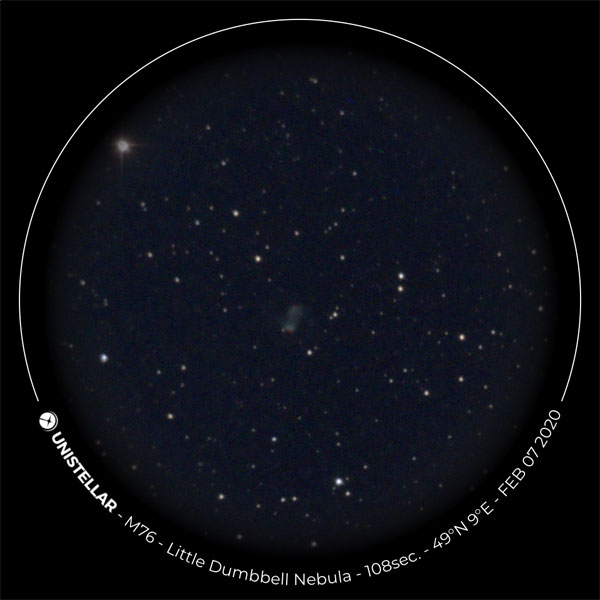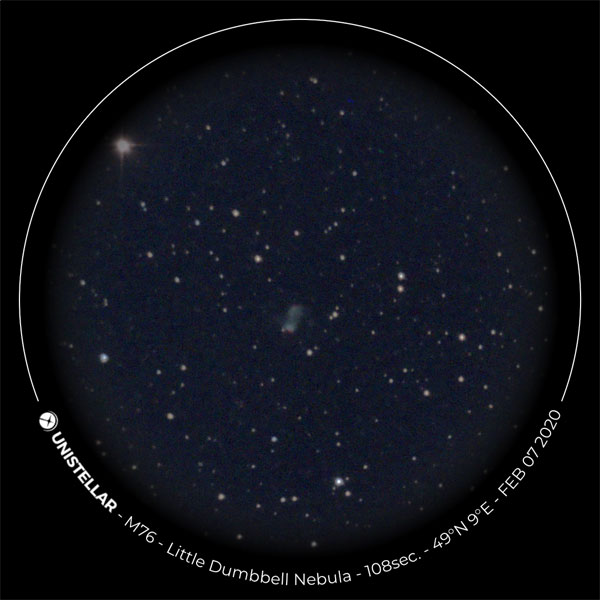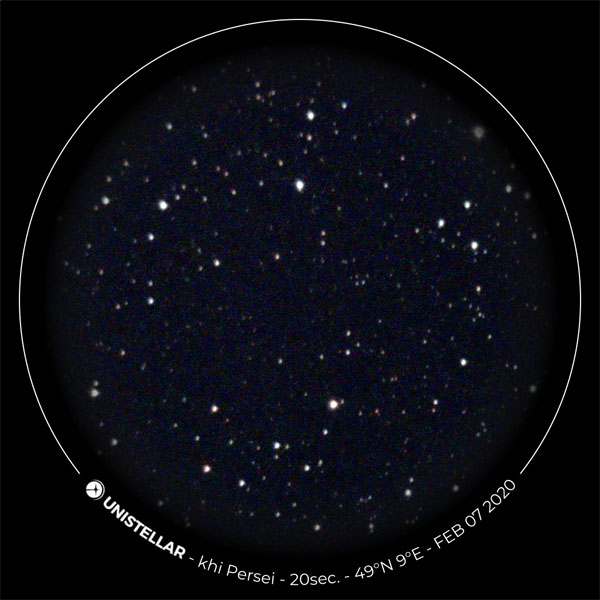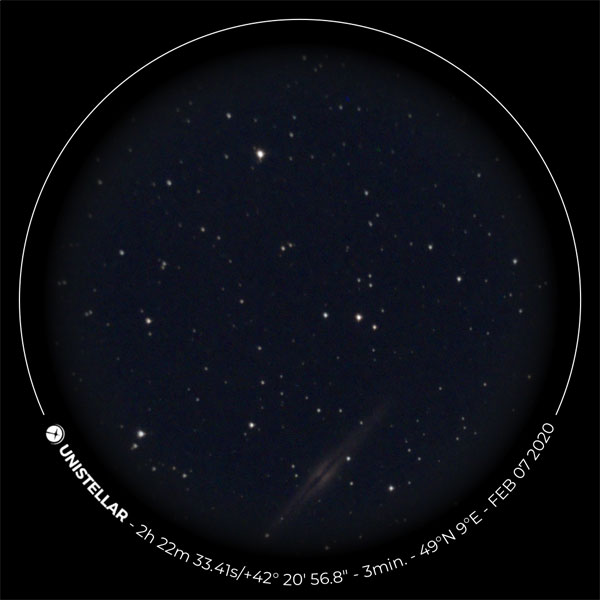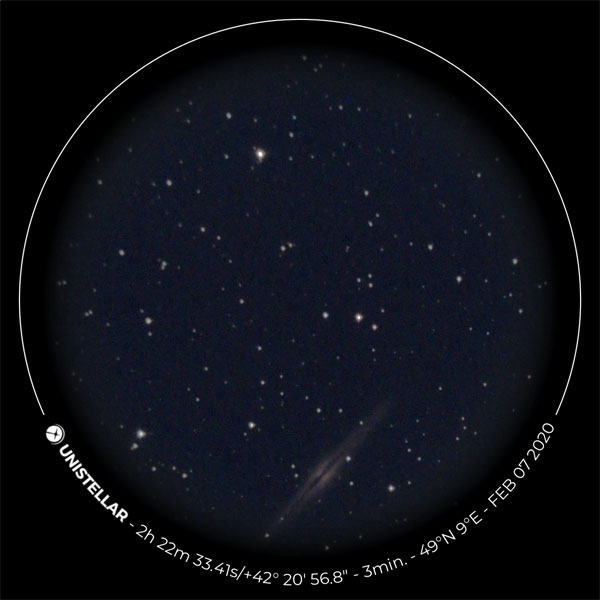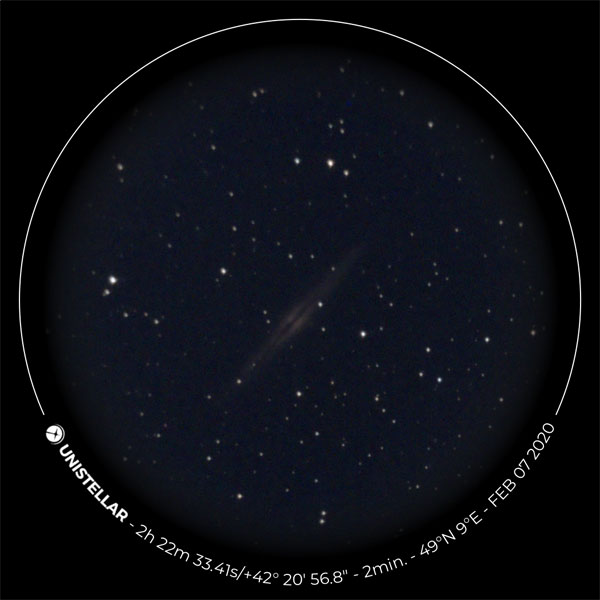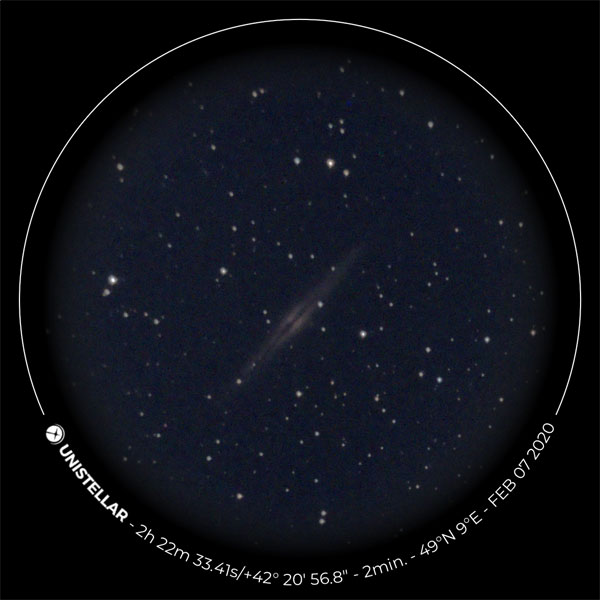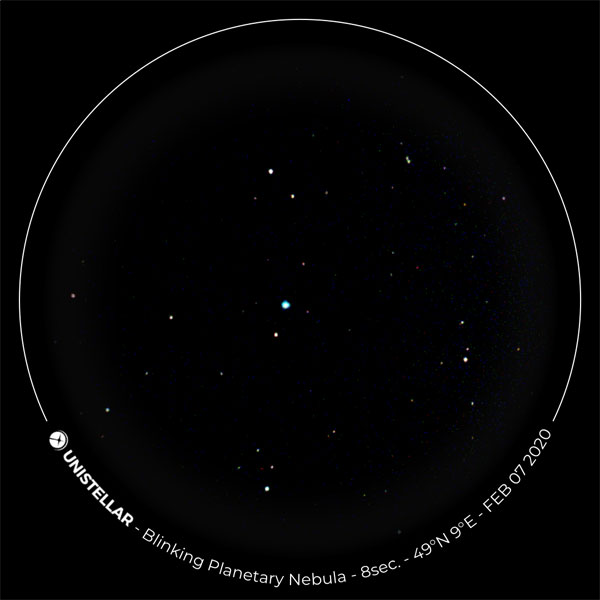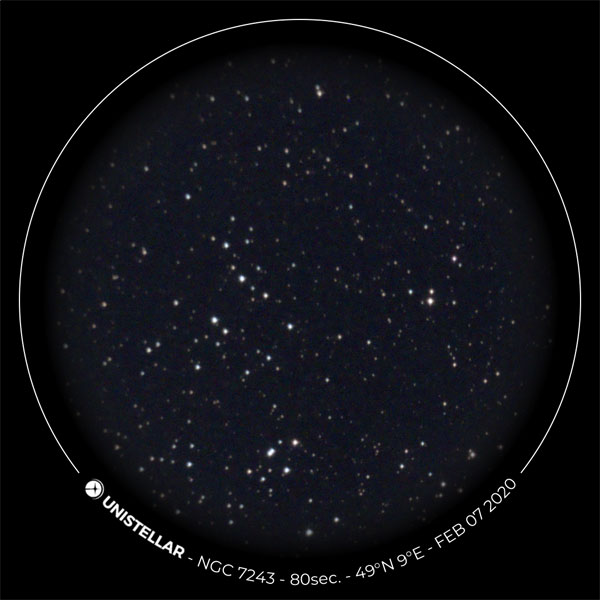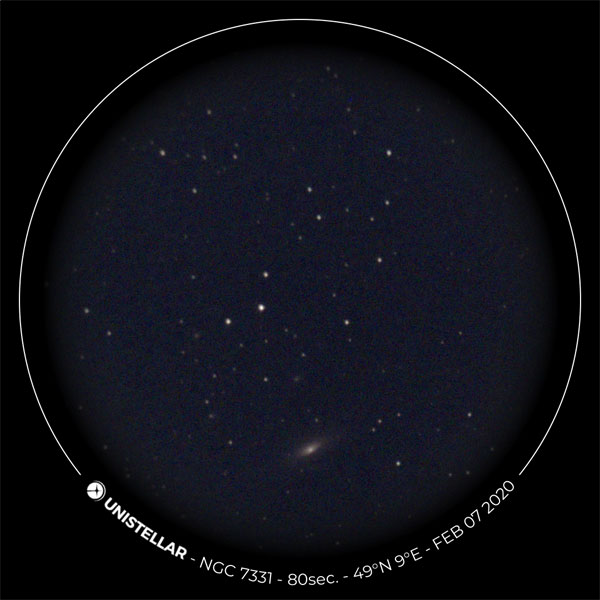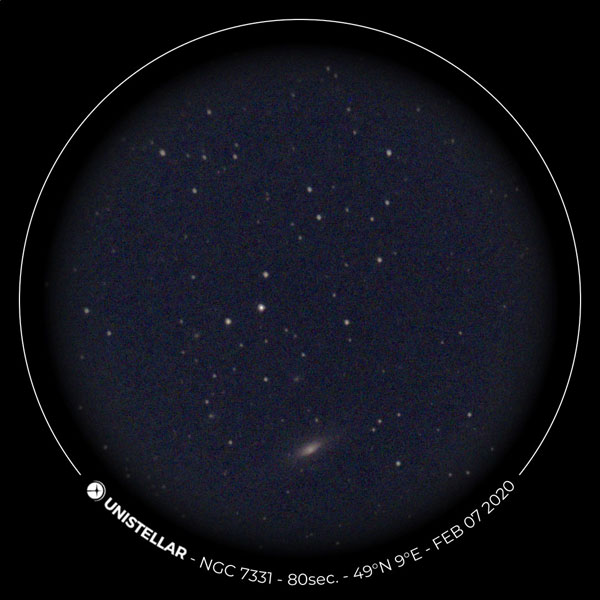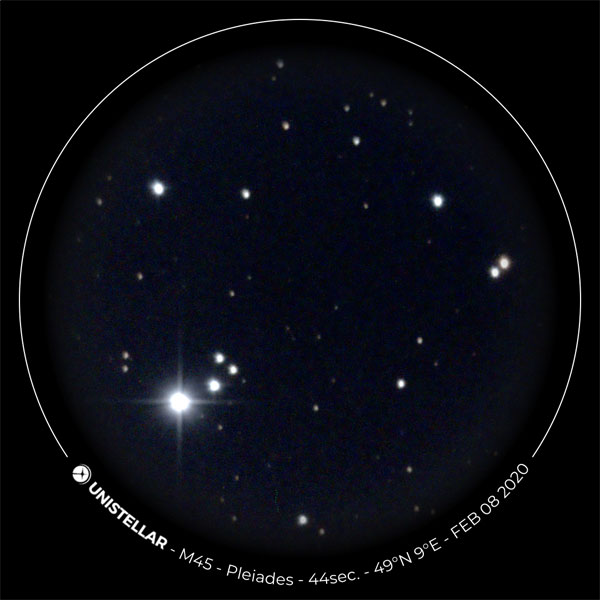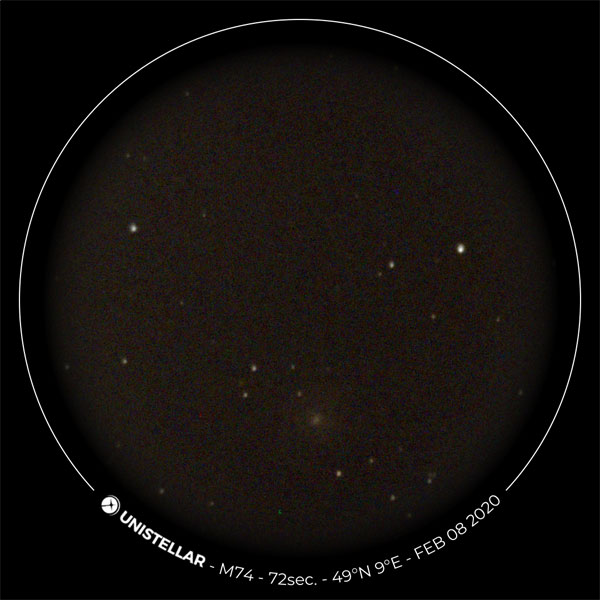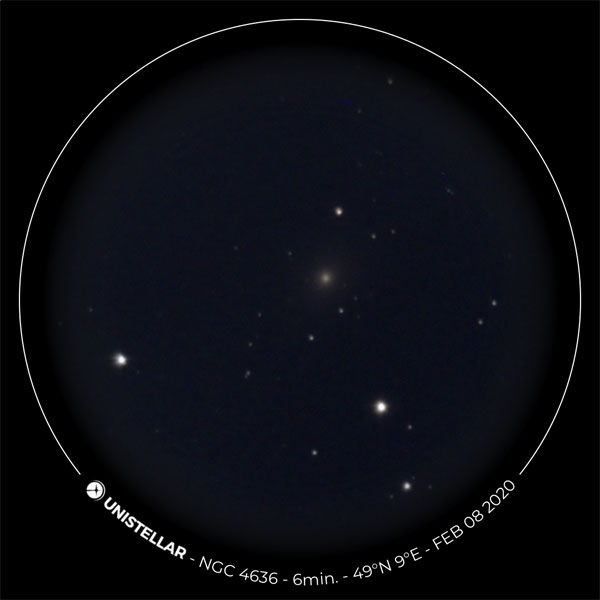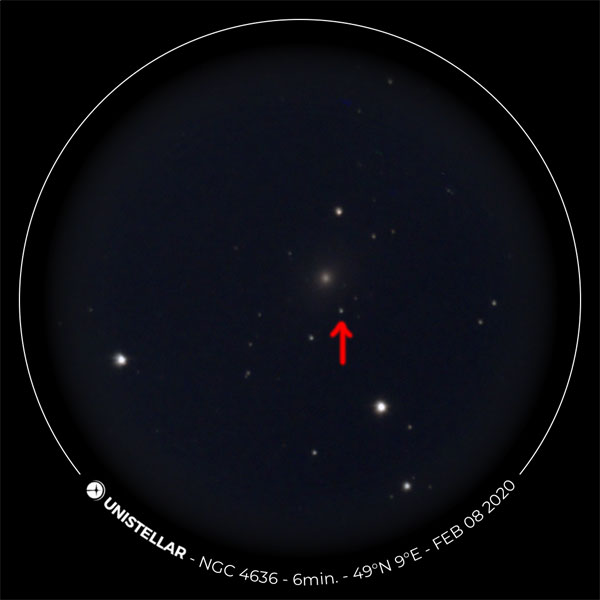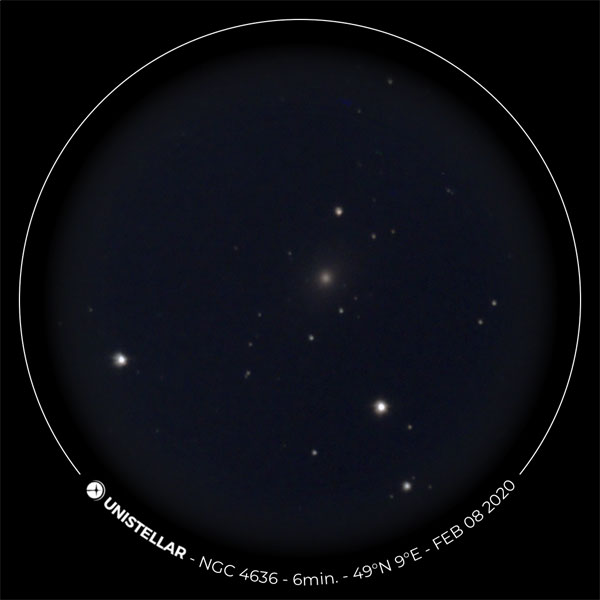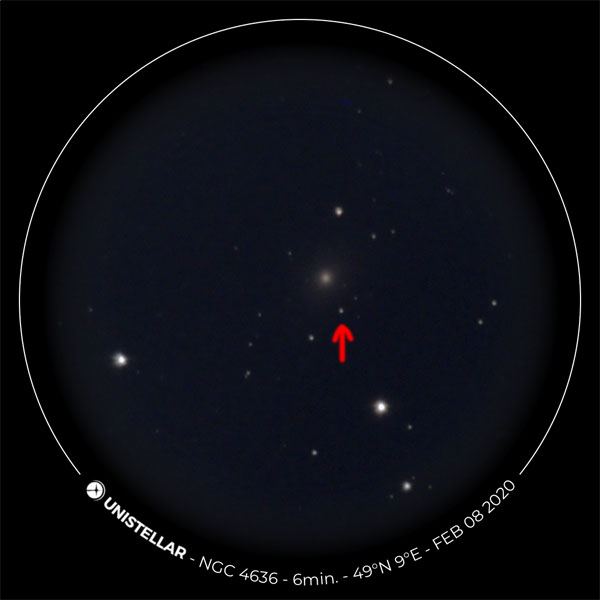Unistellar eVscope - First Observation Sessions
Introduction | Visited Sky Objects | First Observation Sessions | First Conclusions | Links
Archive
On this page, I describe my first observation sessions with my electronic 4,5" Newton telescope Unistellar eVscope (I took part in a Kickstarter campaign in mid-November 2017; it arrived on January 27, 2020; sold in mid-March 2022).
Notes:
- I will report further observation sessions only in short form and will add the best photos to my eVscope photo gallery (see links below) . The first report of this kind can be found on page Deep Sky Observations with eVscope Beginning of 2020.
- See page Overview of the Unistellar Pages for just that!
| Note: At the beginning of December 2021, I received an eVscope 2 ordered in October (I had ordered it, because I was convinced by the better image quality and the slightly larger field of view). I therefore sold my eVscope in mid-March 2022. For this reason, I will not report any further experiences with this telescope here. |
Introduction
In November 2017, when reading the "Adventure Astronomy" newsletter , I learned about the Unistellar eVscope for the first time. For a few weeks already, a Kickstarter campaign was running on this new kind of telescope (it ended up with more than 2100 supporters and more than $ 2 million in cash by November 24, 2017), and I also supported this project. Regrettably, I was already far too late to get hold of one of the two cheap offers. My telescope, which can be assigned to "electronically augmented astronomy" (EAA), arrived at my home at the end of January 2020.
 |
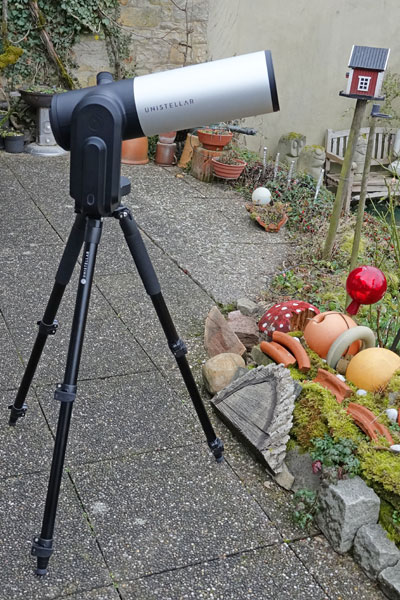 |
 |
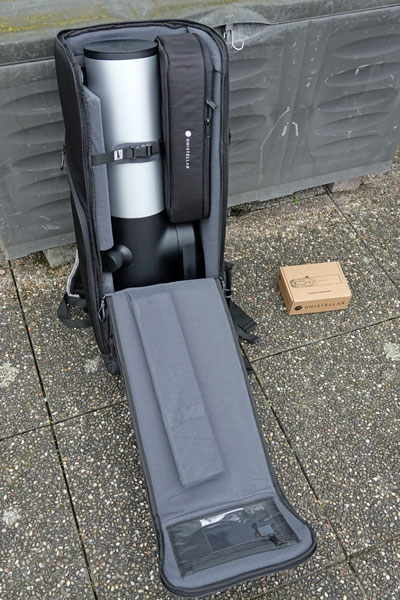 |
Photos: My eVscope (End of January 2020)
In the following, I describe my five first observation sessions and include the best photos that I took during these sessions. Further observation sessions will be described in a shorter format.
Please note that the sesssions in February were hampered by the nearly full moon. As a result, the photos do not really show what the eVscope is capable of.
Visited Sky Objects
During my first observation sessions, I visited (and documented...) the following sky objects with the Unistellar eVscope (in alphabetical order):
- B 33 (Horse Head Nebula)
- C/2017 T2 (Panstarrs; comet)
- M 1 (Crab Nebula), M 29, M 31 (Andromeda Galaxy), M 33 (Triangulum Galaxy), M 34, M 35, M 36, (M 37,) M 38, M 39, M 42/43 (Orion Nebula), M 45 (Pleiades), M 52, M 74, M 76 (Small Dumbbell Nebula), M 77, M 78
- NGC 281 (Pacman Nebula), NGC 457 (Owl Cluster, E.T. Cluster), NGC 663, NGC 884/869 (Perseus Double Cluster), NGC 891, NGC 4636 with Supernova 2020ue, NGC 6826 (Blinking Planetary Nebula), NGC 7243, NGC 7331, NGC 7662 (Blue Snowball Nebula), NGC 7789 (Caroline's Rose Cluster, White Rose Cluster)
Overview of the Sky
Section of the sky showing most of the observed objects (Feb 5, 2020)
First Observation Sesssions
My First Observation Evening
Visited DSO (7): M 1 (Crab Nebula), M 34, M 35, M 42/43 (Orion Nebula), M 45, M 78, B 33 (Horse Head Nebula)
On January 28, 2020, there were surprisingly some cloud gaps. So after we had observed the "nearly conjunction" of Venus and Neptune (the conjunction took place on the preceding day, but the sky was overcast then), I brought the eVscope out onto our terrace. As before during the first days, I had some start-up difficulties, but then, to my astonishment, I very soon had M 42 (Orion Nebula) on my iPhone screen. I was so astonished and pleased that I did not pay attention to the focus at first. A focus attempt in "Enhanced Vision" mode did not succeed, but then I tried it again in "Live View" mode on a star cluster, and it seemed to work - at least for the moment.
Other targets were M 78, which I was able to identify by two stars inside of it, M 34, then M 35, and M 1 (Crab Nebula). Since M 34 and M 35 are located in rather distant regions of the sky, the eVscope had to travel quite long distances (M 78 > M 34 > M 35), which took some time. Since the clouds came and went quickly, I was a bit worried, especially with M 35, which was completely covered at times. In the app, the "Enhanced Vision" mode worked and worked but did not find anything. So I moved on to M 1. The same again! Then I thought I should better take a look through the eyepiece, I had only used the iPhone, and lo and behold, there I saw M 1 brighter than I had seen the nebula ever before! Now I knew that the app had been "hanging" for some time and restarted it. Thereafter, I saw M 1 on the iPhone display as well! I cannot remember any further "quirks" of the app after that...
I moved on to M 45 (Pleiades), they were still free of clouds, and then, just for fun, to the Horse Head Nebula. I was later able to find a "hint" of it on the photo that I took. Then I switched the eVscope off and took it into our winter garden, so that it would not get wet in the case of rain. But I forgot to move the tube into the parking position. So I was not able to put the scope in its backpack...
Photos
The following photos (partly edited) were taken during my very first observation night (January 28, 2020) with the eVscope. For some objects, there are comparison images available, which I took with the Atik Infinity camera.
Second Observation Evening (February 5, 2020)
Visited DSO (11; in order of observation): M 33 (Triangulum Galaxy), M 31 (Andromeda Galaxy), NGC 884/869 (Perseus Double Cluster; not quite hit), NGC 663 (unknown to the eVscope: 752, 654, 559), M 42/43 (Orion Nebula), M 52, NGC 7662 (Blue Snowball Nebula; small, green), M 42/43, M 39; after supper: M 42/43, M 45 (Pleiades), (M 38,) M 37, M 36
A photo of M 36 was incorrectly labelled "M 38" by the eVscope!
It was four days before full moon. The session continued after we had supper.
Photos (in Alphabetical Order)
Third Observation Evening (February 6, 2020)
Visited DSO (18; in order of observation): M 31 (Andromeda Galaxy), M 33 (Triangulum Galaxy), M 39, M 29, NGC 7789 (Caroline's Rose Cluster, White Rose Cluster), NGC 7662 (Blue Snowball Nebula), M 52, NGC 281 (Pacman Nebula), M 76 Little Dumbbell Nebula, NGC 457 (Owl Cluster, E.T. Cluster), NGC 663, C/2017 T2 (Panstarrs; comet), NGC 884/869 (Perseus Double Cluster), M 34 (NGC 752 unknown to eVscope...), M 33 (Triangulum Galaxy), M 79 (not found), M 74, M 77, M 42/43 (Orion Nebula), M 78, M 1 (Crab Nebula)
Three days before full moon. Overall the results were fainter than those on the previous day and one week earlier, which is certainly due to the influence of the almost full moon.
Photos (in Alphabetical Order)
Fourth Observation Evening (February 7, 2020)
Mercury and Venus seen with the naked eye/binoculars
Visited DSO (5; in order of observation): M
29, NGC 7000 (not found),
NGC 7243, NGC
6826 (Blinking Planetary Nebula), NGC
7331, NGC 891
Together with Oliver (5; in order of observation): M
1 (Crab Nebula), NGC
891, NGC 884/869 (Perseus Double Cluster), M
76 (Small Dumbbell Nebula), C/2017
T2 (Panstarrs; comet)
Two days before full moon.
Photos (in Alphabetical Order)
Fifth Observation Morning/Evening (February 8, 2020)
Observed DSO in the morning (4 a.m.): NGC
4636 with Supernova 2020ue
Observed DSO in the evening: M
74 and M 45 (Pleiades); the results were poor due to the
nearly full moon and upcoming clouds...
One day before full moon.
Photos (in Alphabetical Order)
First Conclusions
During my first five observation sessions, I visited about 30 sky objects, some of them several times. Technical problems, especially with the constantly crashing app, could be overcome, and the results look useful. Regrettably, the sessions in February were increasingly disturbed by the waxing moon, which was more and more approaching the full moon.
All in all, I am very satisfied with what I achieved in a short period of time, even though the image quality is a bit below my expectations. But it is not just about the image quality, it is also about what is possible with the eVscope and to what extent I can use it to complement my purely visual observations, for example by running both in parallel.
I report further observation sessions, similar to other telescopes, only in short form and present the best photos in the eVscope gallery (several pages, see links at top of page). Here is the first observation page: Deep Sky Observations with eVscope Beginning of 2020.
Links
- Unistellar Website: unistellaroptics.com
- eVscope Kickstarter campaign: www.kickstarter.com/projects/unistellar/evscope-100-times-more-powerful-than-a-classical-t/
- See also my page offering Astronomy Links.
| 18.01.2023 |

